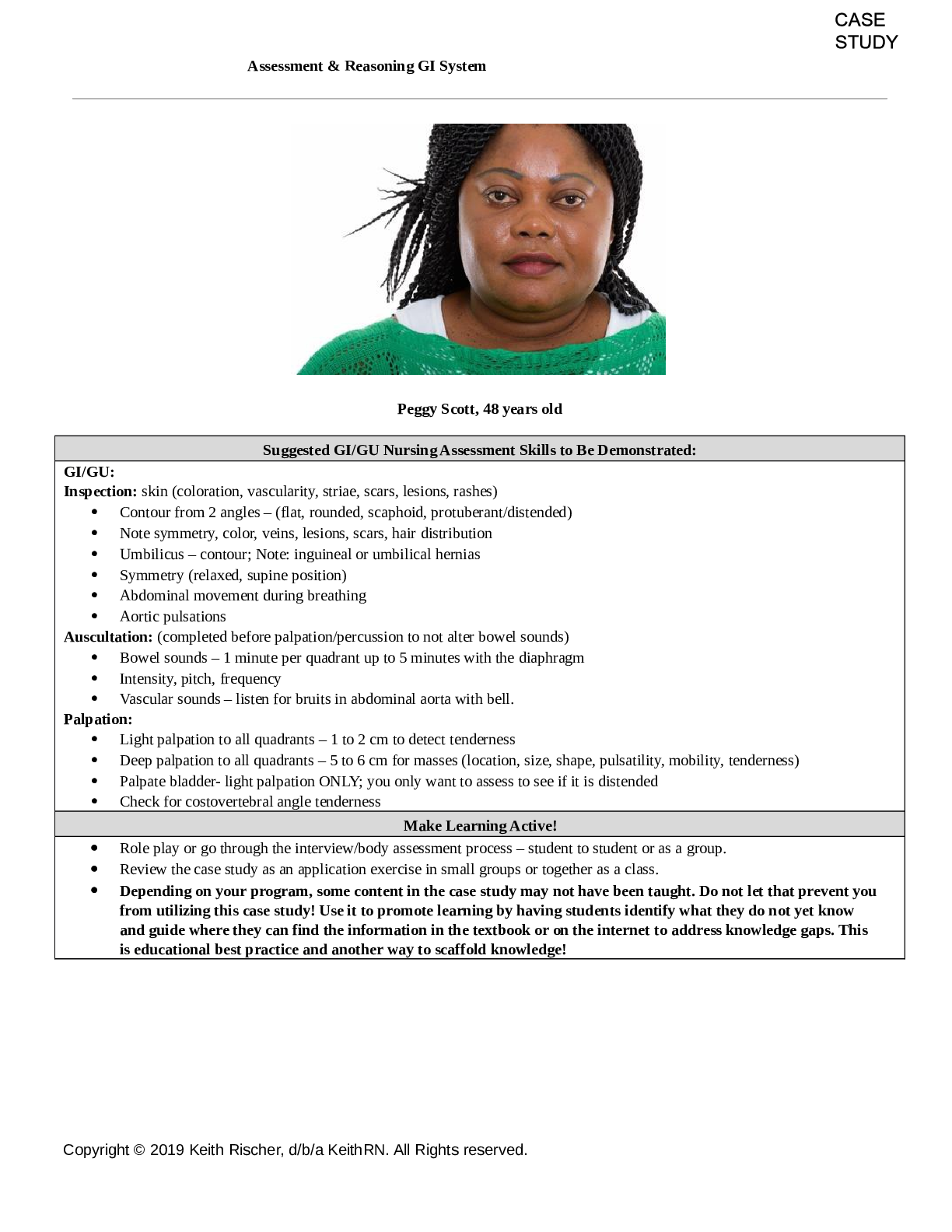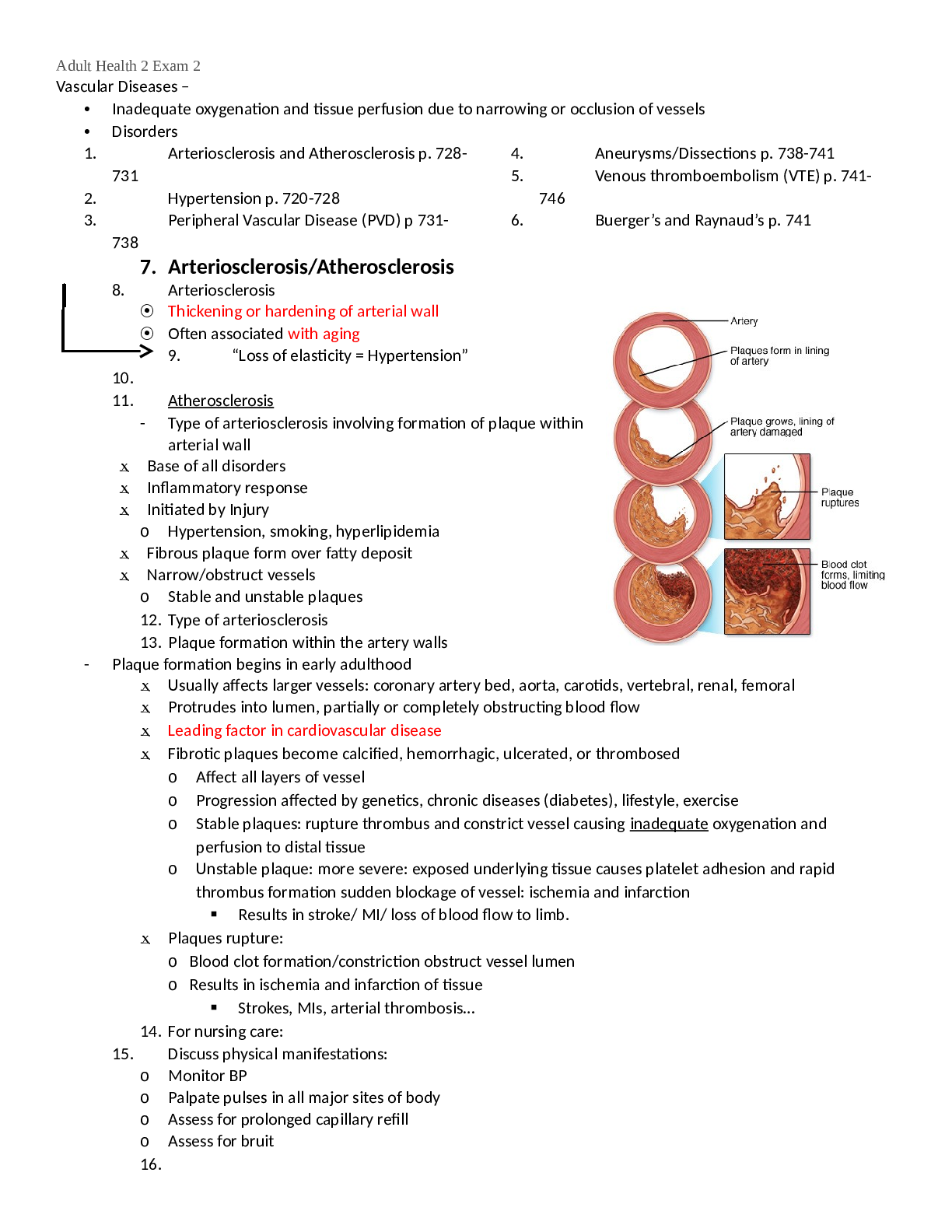Health Care > STUDY GUIDE > University Of Arizona - HPS 387Exam 2 Study Guide_Spring_2018_Final (All)
University Of Arizona - HPS 387Exam 2 Study Guide_Spring_2018_Final
Document Content and Description Below
Key Terms: covered entity, acculturation, ombudsperson, people of color, simple consent, Institutional Review Board (IRB), Human Subjects Review Boards, Community Based Participatory Research (CBPR),... HEW Guidelines, Mothers of Modern Gynecology, Eugenics, Buck vs Bell, simultaneous oppression, ACES study, ACE score, NAMI, personally mediated racism, years of potential life lost, comorbidities, diagnostic overshadowing, HEDIS measures, PBHCI grants program, integrated care, regional behavioral health authority (RBHA), health home Essays: 1. In Dr. Calman’s essay he lists two types of prejudice that impact health care providers, describe each type and provide an example of how they impact health care services. The prejudices Dr. Calman describes are a conscious form of prejudice without a desire to change it. The second type of prejudice is recognizing and attempting to overcome prejudice. These prejudices in providers can influence the decisions they make regarding an individual’s treatment, based on their race, religion, sexual preferences, age, disability, or other characteristics. 2. Define race and provide an example. Define ethnicity and provide an example. How do these concepts differ? According to Barr, how do race and ethnicity impact health care? Provide one example (include information from Henrietta Lacks and Bronx Health REACH video). When referring to race in the context of human groups, race is a social construct. For example, white and black races are cultural constructs. Ethnicity refers to the fact or sate of belonging to a social group that has a national or cultural tradition. An example of this is a group of people such as the Yoruba from Nigeria. Barr examined differences in health services between blacks and whites, and found that blacks’ treatment varies significantly from whites’ treatment even after equalizing income and educational status. Additionally, physician and health care worker prejudices factor into racial and ethnic disparities in healthcare. For example, in “The Immortal Life of Henrietta Lacks”, the titular character Henrietta Lacks, receives treatment that differed from that which a white woman her age would have received in those times. 3. Explain the concept of implicit bias and its relationship to health inequities. Use examples from Bronx Health REACH video, reading from Barr and Calman. Implicit bias refers to attitudes or stereotypes that affect our behavior, understanding, and decisions in an unconscious manner. Physicians’ and health workers’ implicit biases affect the treatment they provide to racial and ethnic minorities. In the Bronx Health REACH video, we saw how in the Bronx, people of color received different and/or worse treatment. In Calman’s essay his description of one of the two prejudices physicians have is similar to implicit bias. In chapter eight of his book, Barr addresses the effects of implicit bias on the treatment of diseases for blacks in comparison to whites; he does not explicitly state implicit bias, but alludes to it. 4. What are CLAS standards? What is the basis for CLAS guidelines? What are the CLAS standard themes? Why are they important? How are they related to the Civil Rights Act? Why are they difficult to enforce? What resources are available in Arizona? These standards are a set of 15-steps intended to advance health equity, improve quality, and eliminate health care disparities, by providing a blueprint for individuals, health, and health care organizations to implement culturally and linguistically appropriate services. These standards are based on the Title VI provision of the Civil Rights Act. There are three themes and include governance, leadership and workforce; communication and language assistance; engagement, continuous improvement, and accountability. They are important for a variety of reasons including the growing demographics of the U.S., the cost of healthcare disparities, medical errors, different standards of care, and excessive length of stay by minorities. These CLAS standards were developed and implemented due to gaps in the Title VI provision. They are difficult to [Show More]
Last updated: 1 year ago
Preview 1 out of 4 pages
Instant download

Buy this document to get the full access instantly
Instant Download Access after purchase
Add to cartInstant download
Reviews( 0 )
Document information
Connected school, study & course
About the document
Uploaded On
Apr 06, 2021
Number of pages
4
Written in
Additional information
This document has been written for:
Uploaded
Apr 06, 2021
Downloads
0
Views
39
















